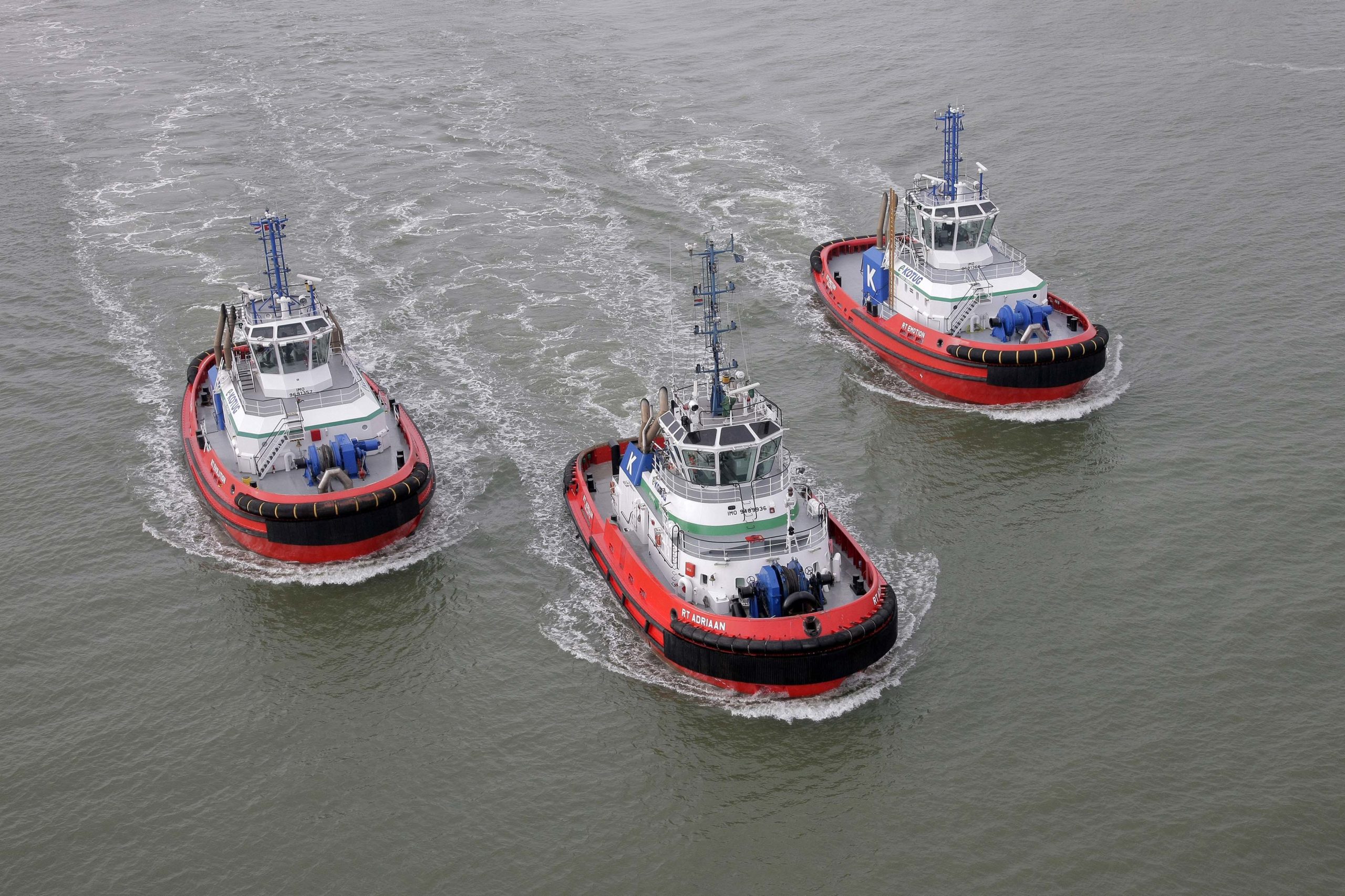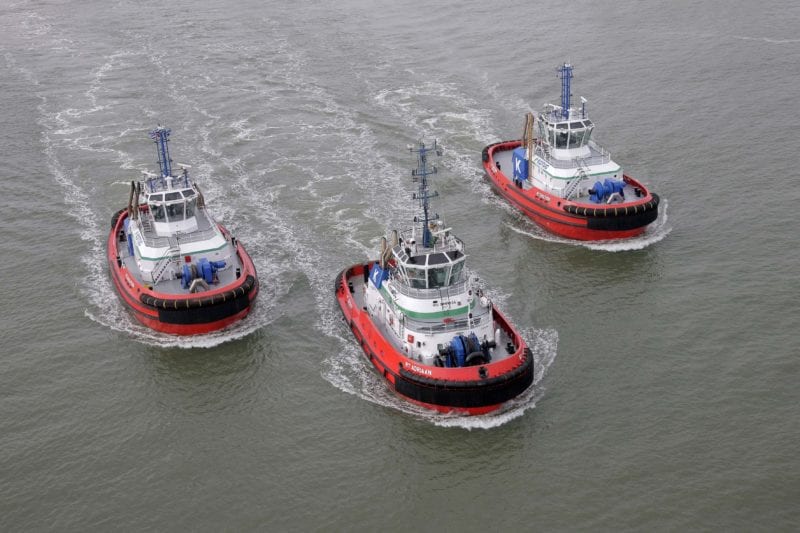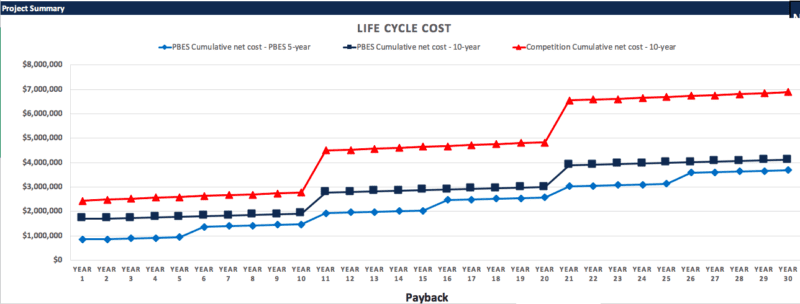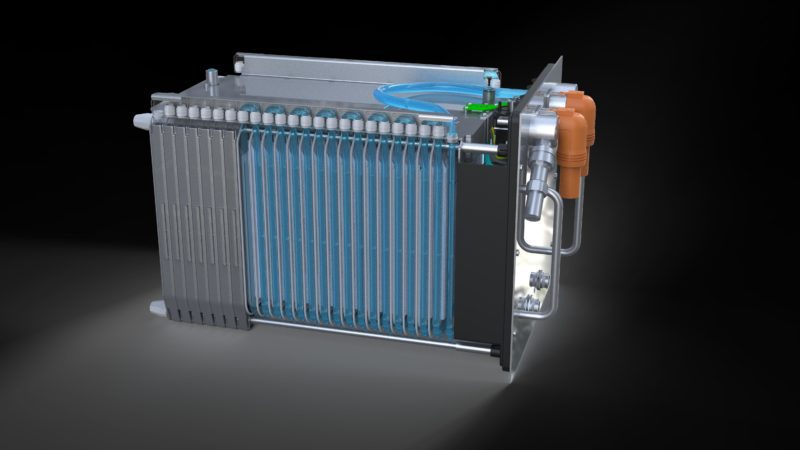How ROVs Are Transforming Offshore Oil & Gas
The oil and gas industry has always relied on innovation to explore further, drill deeper, and increase production. Today, one of the most transformative tools in offshore oil and gas...

Comparing total cost of ownership against bare cost of batteries
Written by Brent Perry, CEO, Sterling PBES
Introduction
In the 10 years since I started the first company dedicated to producing specialist lithium ion batteries for the marine industry, there has been a huge uptake from the market. In the very early days, I would tell people that their vessels would be able to run on battery power and they would look at me with disbelief; at that point in time, land based electric propulsion was rare and – in many cases – people’s experiences of it painted a picture of inconsistency and unreliability.

Fast forward and the electric cars are here to stay. With few exceptions, western countries are committing to exclusively use electric or hybrid electric vehicles in the medium term. Lithium battery power taken hold in other industries in a similar way, especially commercial shipping. Commercial mariners the world over have fully embraced the use of the technology. They are cheaper and cleaner to run and, most importantly, they outperform conventional vessels with very short-term payback.
Today, most vessels being built either use energy storage in some way or have the provision for it. They are being built to future proof their investment.
The Apples to Apples comparison
At the beginning of the age of megawatt scale lithium energy systems, it was determined that cost per kilowatt hour (kWh) was a good way to measure the value that lithium could be evaluated. In the years since, there have been many articles, white papers, and countless conference speeches about the goal of reducing the cost of lithium batteries to below $100 USD/kWh. This may be an arbitrary number largely driven by the stationary grid and automotive suppliers, but suppliers were trying to use this measure to identify when lithium would be cheap enough for these industries to be successful.
The problem with using an arbitrary metric like cost/kWh is that it assumes that all lithium batteries are equal. In the commercial marine space, that assumption is simply not true. The concept of cost/kWh is further complicated by the engineering requirements of marine systems, driven by the flag authorities and classification societies. Things like safety, reliability and risk a far greater real-world influence on the cost of building batteries for the marine industry and all of the associated systems involved. But, how do we create an “apples for apples” comparison that supports rational commercial decision making?
The Challenge:
Power systems on large vessels are highly complex and it is not easy. At Sterling PBES, we have taken the decision to measure the cost of an installation and its payback by including all of the elements necessary to offer a complete installed system. Batteries (priced per kWh) are a part of this – but certainly not all of it. For customers to make a sound decision and understand the overall financial impact, everything needs to be considered.
How do available batteries differ?
There are several versions of battery chemistry available to the battery manufacturers; the dominant chemistries are NMC, Titanate, and LPO or Iron phosphate. Each of these chemistries have different energy densities (energy density is the amount of energy stored for the volume of the cell. Systems with lower energy density tend to be heavier as well as larger while higher energy density systems are usually lighter). Different battery systems have different lifecycle characteristics, age in different ways, and charge/discharge characteristics. The marine industry has gravitated towards NMC as a dominant chemistry but even in one chemistry type there are variations in performance existing from one cell manufacturer to the other, principally focussed on whether the cell is a power cell (instant power) or an energy cell (a larger gas tank). Even the form factor of the cells has a lot to do with the managed risk and performance of a battery.
Balance of System
Then there is the balance of systems required to make a battery system qualify for Type Approval. These are items from simple things like power cables, communication cables, plumbing systems, racking, emergency ventilation, HVAC, chillers, approved battery rooms, vibration and impact supports, fire detection, fire management, gas detection, and gas management. While not typically supplied by the battery manufacturer, the impact to each required sub-system to overall system cost can add up: building a complete battery system in this way leads to hidden incremental costs.
System Integration
A battery that is not fully integrated is not practical . We need to ensure that batteries are optimized to their performance characteristics to deliver the best overall return on investment and optimization of risk management. This is typically associated with the systems needed to make the batteries work – switch panels, cooling systems, heat extraction systems, large scale power electronics including inverters, converters, transformers, frequency regulation equipment, integrated power management systems and the sophisticated software that brings it all together to make the whole system work as designed.
Obviously, integration is a real challenge, but it is imperative that the customers are able to navigate through the many options to actually compare the solutions available and understand the impact to their vessels and their profitability.
It’s time for a reset in the marine energy storage sector. Batteries make financial sense – that is understood. But when comparing battery systems there is a lack of understanding of the all-in cost of a system. Installed and commissioned system costs may be significantly different than the cost per kWh quoted by some companies. Take liquid cooling for example; a liquid cooling system eliminates the need for expensive HVAC systems and makes a battery able to work at a much higher rate. This results in a far smaller battery not only in terms of installed kWh, but also in physical size and weight. A liquid cooled system doesn’t require large air gaps between components, ducting, or the blowers and compressors for HVAC and costs less overall. Far better value per kWh.
If you add up all of the costs associated with batteries, you end up with an “apples for apples” comparison: price, performance, weight, volume, risk, and safety. It is possible to define value by each of the variables and then put it together in a visual way that measures both capex and opex value over the life of a system.
The concept of value per kWh may be easily demonstrated using a recently developed calculating tool. In this case we will examine the value of a liquid cooled SPBES battery using CellSwap compared to an air-cooled single use battery from a respected competitor. The graph below easily demonstrates the value of a system overall; this graph represents a single example of a system and is relative to a specific project. All systems will have slightly different payback and costs associated with each one.
The vessel, a hybrid format harbour tug, is a 70-ton bollard pull boat with a battery capacity of approximately 840kWh of Power batteries. In the example below, we see that given a smaller battery size with the associated racking, liquid cooling, and cables, the system costs are lower for the Sterling PBES systems – even including the CellSwap at every 5 years (generally we expect a 5-7 year lifespan from a 5 year warranty battery). The Sterling PBES 10-year system is a strong second option, although can be more expensive in both the short-term and over 30 years.
The competition was cheaper by the kWh but more expensive as a system. In this case, the air-cooled system cost less per kWh, but lost for a variety of hidden extra costs. It must be larger to achieve the same results, does not include racking, cabling, HVAC, etc. Even with very conservative estimates on additional costs, the air-cooled system loses much quicker. It weighs more, takes up more space, costs more, and may be subject to warranty dispute should the vendor deem that HVAC was not adequate and the system ages faster than anticipated.

Lifetime performance
What if the battery starts to prematurely fail?
Most agreements are written with success in mind, but who pays if the battery starts to show premature aging or worse? Sterling PBES offers our customers a Lifetime Performance Agreement (LPA) to ensure fixed and manageable costs associated with its solution. Other battery manufacturers may or may not do the same, but it is a point that needs to be clearly understood. Even recycling needs to be costed into the system; our movement to a more responsible and accountable industry requires us to know what happens at end of life. Batteries thrown into a landfill is not acceptable – we need to support this phase of system life as thoroughly as the engineering and manufacturing at the start of life.
The educated purchaser
When a battery company starts talking about price per kWh as the metric for value, you should be cautious. As shown in this article, there are many additional costs and risks that may not be being addressed in their bid or their program. Here is a list of questions that the educated purchaser should ask of their battery vendor or simply take into account in total system costing:
| System per MWh | Sterling PBES | Competitor 1 | Competitor 2 |
| Cost per kWh | |||
| Racking | included | ||
| Cables- Power | included | ||
| Cables- Communications | included | ||
| BMS | included | ||
| Plumbing | included | ||
| Fire Detection | included | ||
| Gas Detection | $3,000 | ||
| Fire Prevention/Suppression | included | ||
| Gas Extraction- Emergency | included | ||
| Room Ventilation | included | ||
| A60 Battery Room | shipyard | shipyard | shipyard |
| HVAC | N/A | ||
| Chiller | $20,000 | ||
| Ventilation | $5,000 | ||
| Power Electronics | $0 | ||
| System Integration | $0 | ||
| Cell Swap | $0 | ||
| 100% Replacement Warranty | 2 years | ||
| Lifetime 100% Replacement Warranty Available | Yes | ||
| Lifetime Software Updates | Yes | ||
| Service Reports | Yes |

30-year batteries
Most commercial vessels built today have a lifespan of around 30 years, but the propulsion equipment onboard will require maintenance or rebuild several times. In fact, a vessel may require several rebuilds of machinery over its lifespan, yet most current battery technology only allows for full replacement.
On this hypothetical 30-year vessel, there will be anywhere from 3-6 battery replacements and subsequent electronic waste entering the recycling stream. Anything that can be done to reduce the environmental impact of the battery should be done.
This happens against the backdrop of increased regulation on the disposal of lithium ion batteries, especially in the EU, which will undoubtedly impact costs for the supplier and subsequently the end user. Sterling PBES’ proprietary CellSwap technology allows the battery to be rebuilt with new cells as required, usually on a 5-year cycle. This allows for a far more accurate prediction of lifespan and required system size as the battery doesn’t need to be oversized to compensate for variables like changes in route, duty, heat or even ownership and maintenance intervals. In fact, a battery that is designed for a 5-year lifespan with CellSwap may be only 30-50% the size of a battery designed for a 10-year life. If that hypothetical 10-year battery is air-cooled, then the size of an alternative liquid cooled system with CellSwap is even smaller. This, in turn, increases value again for the customer.
Conclusion
Battery Installations are complicated, but worth it. The impact to the bottom line, the improvement of the risk profile for a vessel, and the environmental impact all contribute so strongly to the bottom line that it is worth the effort of understanding the total system cost.
Take comfort in your relationship with all of your partners. We all want your vessels to be successful and work reliably for a very long time, just don’t be fooled by metrics that don’t measure the risk or the impact thoroughly.
Cheap is not always less expensive, but a value-added decision is critical in a value-added business. ESS is becoming mainstream but currently only 0.5% of the existing global marine fleet currently use ESS – there is huge opportunity for fleet owners to save money and reduce environmental impact of their operations.
Now that ESS has demonstrated over many years the commercial and environmental benefits within the marine sector it is imperative that we optimize the system size, performance and safety to achieve the best financial returns for our end customers and provide the greatest value.
For more information about Sterling PBES, or to arrange an audit of your system, please contact us at [email protected] or visit us on the web at www.spbes.com

Sign up for gCaptain’s newsletter and never miss an update

Subscribe to gCaptain Daily and stay informed with the latest global maritime and offshore news
Essential news coupled with the finest maritime content sourced from across the globe.
Sign Up